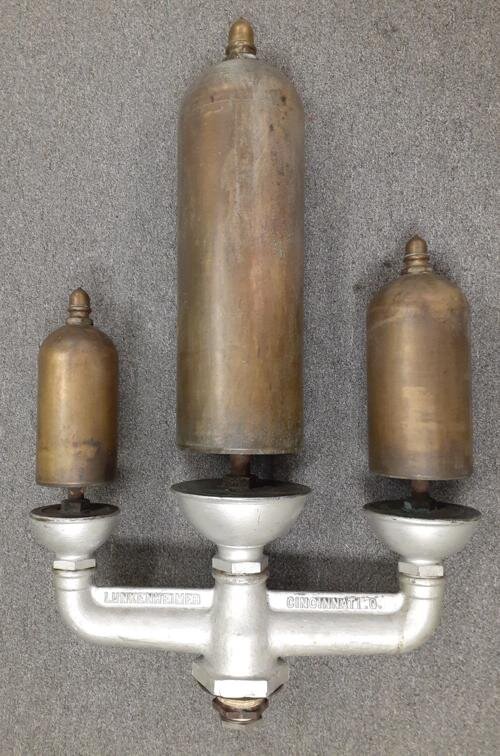Robert Mullen
Catalog Number: 2003.022.01
With the city’s plans to update the facilities at the old fish hatchery at the north end of Riverside Park, the staff and volunteers of the La Crosse County Historical Society have been busy packing up and removing the artifacts at the Riverside Museum. The building has been the home to the museum for more than 30 years.
Among the hundreds of objects being moved out is this steam whistle from the steamboat Minnesota, a boat that ran on the Upper Mississippi for much of its 63-year life. The whistle is made up of three tuned notes, each tuned to produce a harmonious chord.
Perhaps the word “note” is the wrong term, for if you are anywhere near the whistle when it blows, it’s more like a blast. A steam whistle could be heard for miles and often had a recognizable sound distinctive to the boat. The steam whistle’s music is probably best heard at a distance to be fully appreciated.
Riverboat whistles served as a means of communication long before we had the electronic devices used today. River pilots signaled each other when meeting on the river. For example, an ascending vessel would give one blast to pass on the right or two blasts to pass on the left. The descending boat would respond, working out a safe passage for both boats.
This whistle was made by the Lunkenheimer Company in Cincinnati about 1915 and placed on the Minnesota. The boat was actually a 116-foot pleasure craft made for doctors Charles and William Mayo of Rochester, Minnesota. By 1922, it was renamed the General Allen and converted to a work boat for the U.S. Engineers at Fountain City. In later years it, operated farther downstream. After several conversions and name changes, the boat sank in St. Louis in 1978, where it had been a restaurant named the Cotton Belle.
Stanley “Mike” Knoll, a lifelong riverman, saved this whistle from becoming scrap metal and donated it to the La Crosse County Historical Society in 2002. That year, it was temporarily mounted on the Julia Belle Swain and played its three-note melody before being placed on exhibit at the Riverside Museum.
If you have never seen this steam whistle, it’s understandable. You have only had 17 years to visit it at the museum in Riverside Park. The exhibition closed permanently on Dec. 31, and all the artifacts have been removed.
The closing has been an opportunity for the museum staff to take closer look at the many “things that matter” in their collection and consider the possibilities for a new museum. Yes, this classic three-bell whistle will be seen again when the Historical Society relocates its museum with new exhibits later this year. Stay tuned.
This article was originally published in the La Crosse Tribune on February 14, 2020.
This object can be viewed in our online collections database by clicking here.


